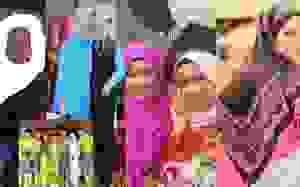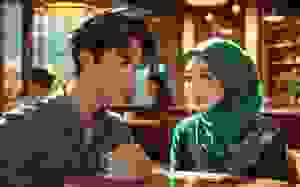Tale Of Two Presidents Parallels From Lbj S Vietnam War Visit
US President Donald Trump’s recent visit to Malaysia has been widely criticised as revealing our country’s “performative solidarity” with the Palestinian cause.
However, this has not been the first time Malaysia has welcomed a disgraced American president at a time of global condemnation against US-backed military violence.
Oct 30, 1966, nearly six decades ago, Malaysia received its first American presidential visit from Lyndon B Johnson at the height of the Vietnam War.
In disturbing historical parallels, the anniversary of Johnson’s visit had also taken place only a few days apart from Trump’s visit to Kuala Lumpur on Oct 26 last week.
More disturbingly, however, were the reasons for Johnson’s visit, which had been to thank Malaysia for supporting the US “anti-communist efforts” in Vietnam and Southeast Asia.
Pulling out the stops for welcome
In a manner much more extravagant than Trump’s, Johnson’s arrival in 1966 had been celebrated by more than 20,000 Malaysians across the capital, with schoolchildren and public servants encouraged to participate in the welcome.
Today, remnants glorifying the president’s visit still persist - a former Felda settlement in Seremban, which the president had briefly visited, still goes by the name “Kampung LBJ”.

Tunku Abdul RahmanJohnson had been greeted by then prime minister Tunku Abdul Rahman and the then Yang di-Pertuan Agong, whom he further congratulated for Malaysia’s victory against “communist terrorism” during the first Malayan Emergency.
Nevertheless, although the authorities had welcomed the president with much fanfare, mainstream historical narratives often fail to highlight that Johnson’s visit, much like Trump’s, had also been met with widespread criticism and rejection.
Newspaper archives from 1966 illustrate how hundreds of protesters had gathered nationwide, including in Singapore, to condemn the ongoing American aggression in Vietnam.
Many amongst the protesters had been students, trade unionists, and members, including MPs from the left-leaning Labour Party.
Unfortunately, these anti-war protests were also met with police brutality. During Johnson’s visit, for example, a protester had been shot dead outside the former US Embassy building in the heart of Kuala Lumpur, near where the president had stood.
The New York Times reported that the victim had been holding placards and banners displaying anti-war slogans in both English and Malay, urging support for the people of Vietnam, and for “US imperialists get out from Asia.”

Later, the prime minister described the incident as “sad”, but defended that the police “had no choice”.
Downplaying protesters’ demands, Tunku also described the anti-war movement in Malaysia as organised by “communists who refuse to listen” and “designed to embarrass the government”.
The New York Times further quoted him describing how he otherwise, “had no troubles at all in convincing the great majority of Malaysians” for America’s aggression in Vietnam.
Taking a page from our book
Eventually, Tunku publicly admitted to breaking international law under the Geneva Accords of 1954, by sending arms to the US-backed army in Saigon, and by training US soldiers on Malaysian soil.
Both the then prime minister and the then Yang di-Pertuan Agong had justified Malaysia’s support for the US as “necessary” efforts against communist aggression to achieve “regional peace.”
By the end of 1966, the same year Johnson had visited Malaysia, this American pursuit for “peace” had resulted in the US bombing Vietnam nearly three times more than it had Japan and Korea respectively during the Second World War and the Korean War.
When the war concluded in 1975 after nearly two decades of armed conflict, nearly 3 million Vietnamese civilians had lost their lives.
More ironically and disturbingly, however, was the fact that many of the US military tactics in Vietnam had also been directly modelled after the British colonial administration’s violent anti-communist suppression during the Malayan Emergency.

Upon arrival at Subang Airport, Johnson announced in his official speech that, “I have come to Malaysia to learn from you. Your achievements have the greatest significance for our struggle in Vietnam today.
“You have shown that military action can stop communist aggression, and that while the aggression is being stopped… the peace, as well as the war, can be won,” he said.
The president had been correct to highlight how the US had a lot “to learn” from Malaysian history.
The widespread use of chemical warfare, such as Agent Orange, in Vietnam, for example, was a technique that the US had replicated from the Malayan Emergency.
Declassified British archival documents revealed in 1984 how the lethal chemical agent had first been used across more than 20 sites in Pahang from 1948 to 1960.
Today, its full effects on Malaysian victims, their descendants, and our environment remain unknown.
Similarly, Britain’s strategy of segregating rural villagers and plantation workers into “New Villages” under the Briggs Plan also later inspired the “Strategic Hamlet Programme” run by the US-backed government in South Vietnam.

A new village under the Briggs PlanIn both Malaya and Vietnam, this led to the violent and forced displacement of innocent civilians, who were “suspected communists”, into internment camps guarded by armed soldiers and barbed wire, where various crimes against humanity took place.
Yet, the most infamous of Britain’s “anti-communist” atrocities in Malaya was the 1948 Batang Kali massacre, where at least 24 plantation workers were killed without justification.
Today, their descendants still have not received justice or compensation.
Historians later described Batang Kali as “Britain’s My Lai” when drawing comparisons to the US massacre of more than 500 Vietnamese villagers in 1968.
Widespread visual evidence of the atrocities committed by British and American forces in Malaya and Vietnam remains as historical lessons we have failed to learn.
In some of these photographs, Western troops are even seen posing remorselessly with their beheaded and mutilated victims.
The more things change…
Today, we continue to witness similar atrocities emerging from Gaza and elsewhere.
When remembering how the Vietnam anti-war movement had successfully galvanised millions worldwide, it is important to emphasise how a significant reason behind the movement’s widespread popularity was also because Vietnam had been the first mainstream war to be publicly televised.
Our generation now similarly continues to witness an ongoing genocide being live-streamed through social media.

But further historical parallels also exist in the language and rhetoric used to justify imperial violence in both Vietnam and Palestine.
While the US stressed that its military efforts in Vietnam had been necessary to “defeat communist terrorists” for the “pursuit of regional peace”, today, the massacre of Palestinian civilians is justified through language which labels them as “Hamas” and “Islamist terrorists”.
Similar language had also been used during the US “war on terror” and its subsequent invasion of Iraq, where images of human rights abuses committed by US soldiers in Abu Ghraib continue to be etched in our memories today.
Most recently, many have also rightfully questioned whether Trump’s “peace plan” for Gaza will continue to ring hollow in the same way that Western efforts for “peace and reconciliation” often have.
Nevertheless, despite Prime Minister Anwar Ibrahim’s insistence that he has repeatedly “pressured” Trump on Gaza’s humanitarian crisis, Malaysia’s relationship with the US should not, however, be singled out as the sole moral inconsistency within our foreign policy.
Our longstanding approach of remaining “non-aligned” is bound by both pragmatic neutrality and ethical inconsistency.
While Malaysia continues to strengthen ties with major powers such as the US, India, China, and Russia, our economic prosperity also comes at the cost of enabling the humanitarian crimes of our international allies - whether in Palestine, Sudan, Myanmar, Ukraine, and elsewhere.
Nevertheless, future generations will still reflect on these presidential visits and question if Malaysia has, more than once, chosen to be on the wrong side of history. - Mkini
DANIA KAMAL ARYF is a member of the Malaysiakini team.
Artikel ini hanyalah simpanan cache dari url asal penulis yang berkebarangkalian sudah terlalu lama atau sudah dibuang :
http://malaysiansmustknowthetruth.blogspot.com/2025/11/tale-of-two-presidents-parallels-from.html
 PING BABAB : Raksasa Aggregator Malaysia
PING BABAB : Raksasa Aggregator Malaysia
 Tunku Abdul RahmanJohnson had been greeted by then prime minister Tunku Abdul Rahman and the then Yang di-Pertuan Agong, whom he further congratulated for Malaysia’s victory against “communist terrorism” during the first Malayan Emergency.
Tunku Abdul RahmanJohnson had been greeted by then prime minister Tunku Abdul Rahman and the then Yang di-Pertuan Agong, whom he further congratulated for Malaysia’s victory against “communist terrorism” during the first Malayan Emergency. Later, the prime minister described the incident as “sad”, but defended that the police “had no choice”.
Later, the prime minister described the incident as “sad”, but defended that the police “had no choice”. Upon arrival at Subang Airport, Johnson announced in his official speech that, “I have come to Malaysia to learn from you. Your achievements have the greatest significance for our struggle in Vietnam today.
Upon arrival at Subang Airport, Johnson announced in his official speech that, “I have come to Malaysia to learn from you. Your achievements have the greatest significance for our struggle in Vietnam today. A new village under the Briggs PlanIn both Malaya and Vietnam, this led to the violent and forced displacement of innocent civilians, who were “suspected communists”, into internment camps guarded by armed soldiers and barbed wire, where various crimes against humanity took place.
A new village under the Briggs PlanIn both Malaya and Vietnam, this led to the violent and forced displacement of innocent civilians, who were “suspected communists”, into internment camps guarded by armed soldiers and barbed wire, where various crimes against humanity took place. But further historical parallels also exist in the language and rhetoric used to justify imperial violence in both Vietnam and Palestine.
But further historical parallels also exist in the language and rhetoric used to justify imperial violence in both Vietnam and Palestine.

























